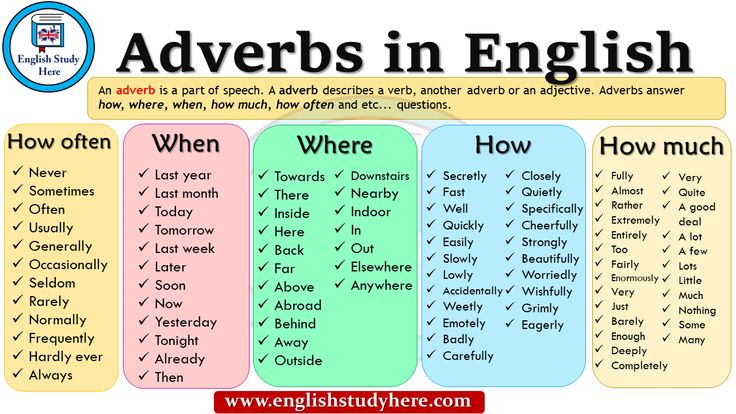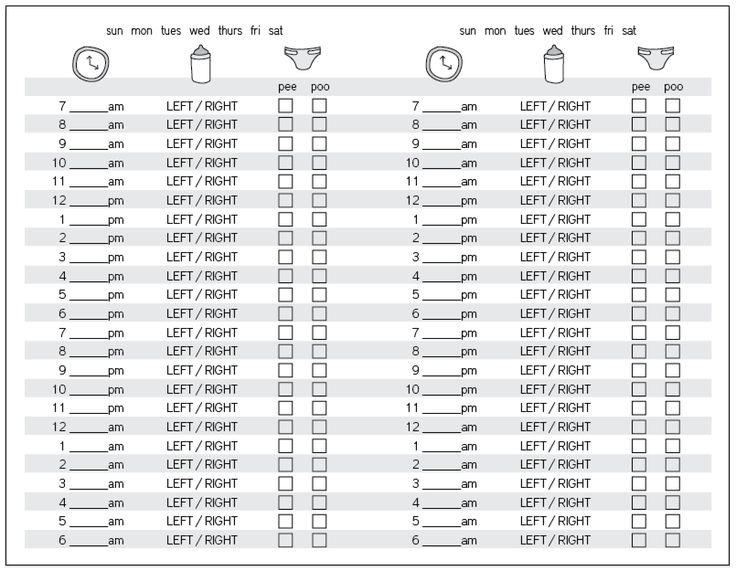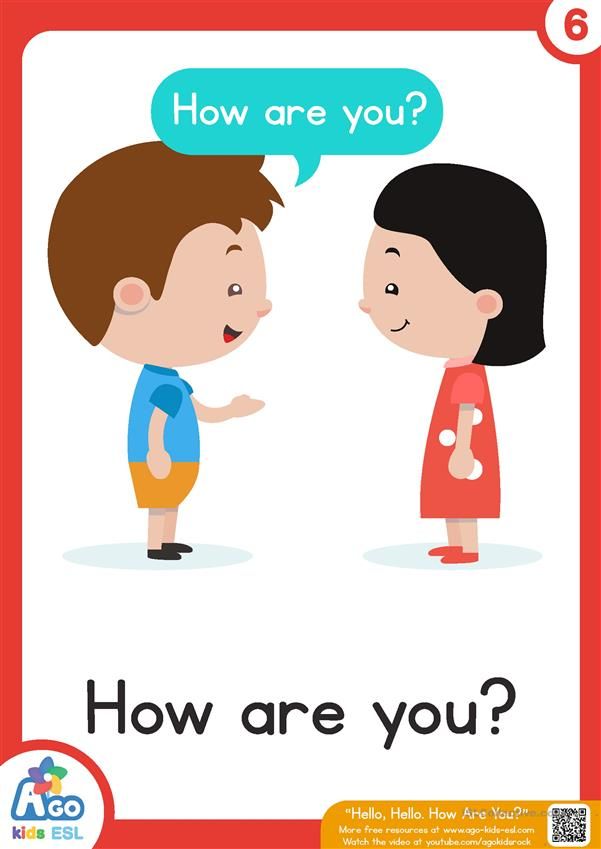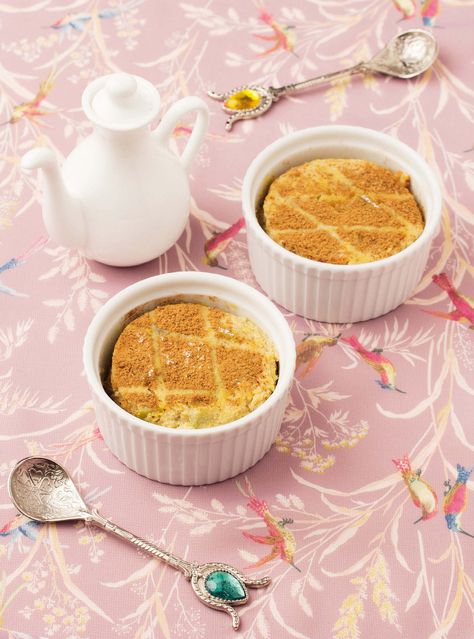Phase 1 baby food
10 Baby Food Purees (Stage 1)
Everything you need to know about making stage 1 baby food, including 10 recipes for tasty purees that are perfect for introducing solids.
Introducing solids to your baby is such an exciting milestone but it can also be an overwhelming time with lots of questions. When is your baby ready for solids? Which foods should you start with? And how do you make homemade baby food?
I’m here to make sure you have all the information you need! Plus sharing 10 baby food purees to give you some ideas of where to start if you’ve decided to make your own baby food.
When To Start Solids
Most pediatricians recommend babies start solids between 4-6 months, but you know your baby best so trust your gut and do what feels right to you (with guidance from your pediatrician)!
I have a great guide for introducing solids to babies where I outline the basics and share my approach, but just to recap, here are some signs that your baby is ready to start enjoying solid food:
- Baby can hold their head up in an upright position without too much bobbing
- Baby can sit up with (or without) support
- Baby has lost the tongue thrust reflex
- Baby puts their hands or toys in their mouth
- Baby has shown interest in food such as leaning forward and opening their mouth or trying to grab food you’re eating
How to Introduce Solid Food to Baby
Once you’ve decided that your baby is ready to start solids, it’s go-time. There are different approaches to this including baby led weaning, where you skip purees all-together and let your baby feed themselves with finger foods from the start and traditional weaning, which starts with pureed (or blended) foods.
With Olivia I did a hybrid approach where the first few foods we introduced where purees and then we started with a few finger foods when she seemed ready. I go into more detail on this in my introducing solids post.
To be honest, if you’re planning to do baby led weaning this post probably won’t be that helpful because it’s focused on how to make a variety of single ingredient purees.
What is Stage 1 Baby Food?
If you decide to use purees, you’ll quickly notice that baby food is labeled by three stages. Here is a breakdown of what these different stages mean:
- Stage 1 (4-6 months) – single ingredient foods that are pureed into a very thin consistency with no chunkiness whatsoever that can be served with a spoon.

- Stage 2 (around 6-8 months) – slightly thicker consistency and typically includes food combinations and the addition of spices like cinnamon, nutmeg, turmeric, mint, basil, etc. See my stage 2 baby food combos.
- Stage 3 (around 9-12 months) – thick blended foods with chewable chunks or small cut up pieces of easily chewed food.
Best First Foods for Baby
Solid foods can be introduced in any order, but most pediatricians recommend starting with a single-ingredient food that is easy to digest like pureed sweet potato, carrot, banana and/or avocado. Other options include pureed meats, poultry, beans and iron-fortified baby cereals like rice cereal or oatmeal.
You just want to be sure the first few foods are pureed super smooth and almost a liquid consistency. You can easily thin purees with breastmilk or formula.
As baby gets more practice with eating you can reduce the amount of liquid and offer purees with a thicker texture.
Food Allergies and Known Allergens
When introducing foods it can be helpful to introduce only one food every three to five days so you can watch for any signs of allergic reactions. A reaction could show up almost immediately or a few days after so it’s recommend to introduce one food at a time when starting out so you can track what may be causing a reaction in your baby. Reactions include: hives or rashes, itching, shortness or breath or more serious reactions like vomiting or swelling of the lips and tongue.
It’s also helpful to be mindful about common allergens. Foods like diary, eggs, peanuts, tree nuts, wheat, soy and shellfish should be introduced gradually after less allergenic foods have been tolerated. The previous recommendation was to wait on these foods, but that as since changed and in fact, delaying the introduction of these foods may increase the risk of a child developing allergies.
One food that is off limits until a baby is at least 1 year old is honey because of the risk of infantile botulism.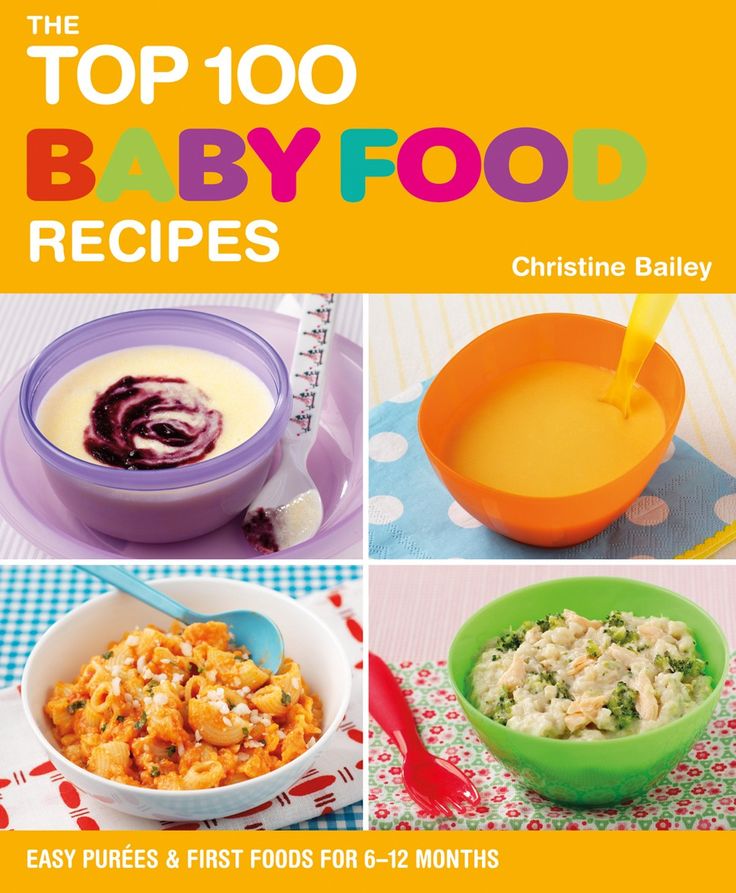
How to Make Homemade Baby Food
We covered when and what foods to start with. Now lets talk how to make a basic baby food puree! Don’t fret, it’s super easy. Here’s the basic process:
- Prep: you’ll want to start by ensuring your fruit or vegetable of choice is thoroughly cleaned. Even if you’re using organic fruits and vegetables, you’ll want to washed and dry your produce! Once the produce is clean, you’re ready to peel and chop into chunks. You can skip this step for some fruits or veggies.
- Cook: some foods like banana and avocado don’t need to be cooked, but many do. For cooking, you can steam, boil or roast. I recommend using a fork to test that they’re tender and soft.
- Blend: place cooked food into a blender or food processor and blend until smooth (or the consistency you desire), adding liquid (breast milk, formula or water) as needed.
That’s it! You’ve just made a homemade baby food puree!
Best Tools For Making Homemade Baby Food
You really don’t need any fancy kitchen appliances, but there are a few tools that will come in handy when making homemade baby food.
- Steamer basket – Steaming is one the easiest ways to cook foods for making purees and having a steamer basket is key. I have a really basic steamer basket that fits in most pots, but I also use the steamer basket that comes with my Always Pan.
- Blender – I’ve been using my Vitamix blender and love how smooth it makes the purees. You can also use a food processor or an immersion blender.
- Silicone ice cube trays – In the beginning I really liked to make large batches of pureed food and pour it into a silicone ice cube tray with a lid to freeze for later. It was perfect when babies aren’t eating big portions because each cube is about 1-2 ounces.
- Freezer bags – Once you have frozen cubes of puree you can transfer them to a freezer-safe bag. I love reusable Stasher bags for this.
- Storage containers – As soon as you start making homemade baby food you realize that you need lots of little containers.
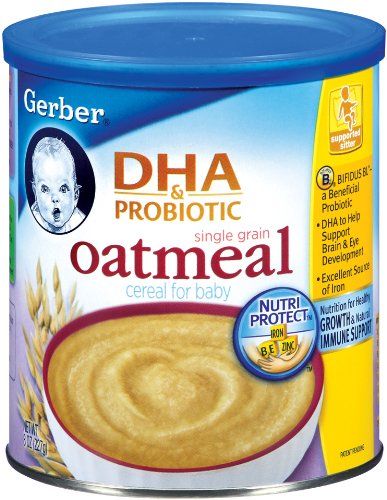 A friend loaned me a bunch of plastic storage containers for keeping homemade baby food and I also invested in these glass containers that are freezer safe.
A friend loaned me a bunch of plastic storage containers for keeping homemade baby food and I also invested in these glass containers that are freezer safe. - Permanent markers – When storing and freezing baby food you’ll want to label everything with the name of the food and the date.
- Baby food maker – if you’re looking for an all-in-one solution that steams food and blends it there are some cool gadgets (like the BEABA Babycook) that make homemade baby food a breeze!
10 Stage One Baby Food Purees
Ready to get started making some stage 1 baby food purees? Here are 10 easy recipes to get you started. These are the purees I used in the early days with Olivia. She loved all of these, but there are a ton of other purees you can try including pear puree, apple puree (aka applesauce), bean purees (like chickpea or lentil puree) and even chicken puree.
Sweet Potato
Sweet potatoes are a powerhouse vegetable! They’re packed with fiber, vitamins, minerals and antioxidants and babies love their sweet flavor.
Sweet Potato Puree
4 from 9 votes
Sweet potato puree is so easy to make. Just bake your sweet potatoes, peel and blend until smooth! It's a great first food for babies, but can also be used in baking recipes, mixed into oatmeal, added to smoothies or served as a side dish.
Get Recipe
Carrot
Carrots are low on the allergy scale and easily digested by a tiny tummy. They are high in beta-carotene, an antioxidant that converts to vitamin A in the body, which is crucial for eye health and overall immune function.
Carrot Puree
4.05 from 41 votes
How to make carrot baby food by cooking and blending carrots into a smooth and creamy puree. Carrot puree make a great stage 1 starter food for babies.
Get Recipe
Avocado
Avocados are high in heart-healthy fats as well as fiber, vitamins, minerals and antioxidants! They’re incredibly nutritious and super easy to prepare.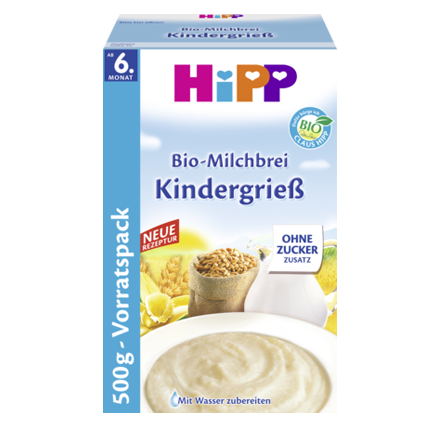
Avocado Puree
5 from 3 votes
Avocado is great first food for babies. It contains healthy fats, it’s easy to blend and it’s delicious. Make it in your food processor or blender or simply mash!
Get Recipe
Banana
A great first food to introduce to babies, bananas are naturally soft and mushy, easy to digest and loaded with vitamins and minerals. The best part? You don’t need to cook them!
Banana Puree
5 from 2 votes
Fresh banana puree is a great first food and baby will love it because it tastes sweet! Easily make it by mashing or blending ripe bananas.
Get Recipe
Peas
Peas are naturally sweet and pack a punch with nutrition, containing a variety of vitamins, minerals and antioxidants. They are also high in protein, with 4 grams per half-cup serving. Fun fact, peas are actually a legume!
Pea Puree
5 from 5 votes
Pea puree is a great first food when introducing solids to babies and all you need is a bag of frozen peas and a blender or food processor!
Get Recipe
Butternut Squash
Technically a fruit, butternut squash is packed with fiber, vitamins and minerals.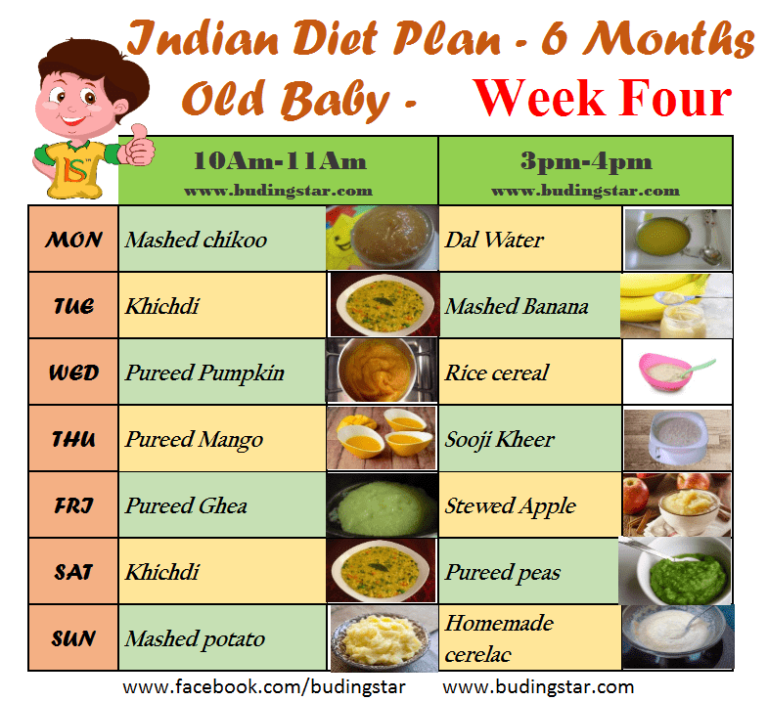
Butternut Squash Puree
Make butternut squash puree at home with this simple recipe! Just scoop the seeds, roast, blend and use in recipes that call for butternut squash puree. It's also a great first food for babies!
Get Recipe
Peach
Peaches are naturally sweet and perfect for introducing baby to solid foods. They are rich in many vitamins, minerals and antioxidants.
Peach Puree
5 from 4 votes
Peach puree is so easy to make using fresh peaches! It's a great first food for babies, but can also be used as a topping or mix-in for breakfast, dessert and drink recipes.
Get Recipe
Mango
Rich in vitamins, minerals and antioxidants, mango is especially high in vitamins A and C. They also contain a group of digestive enzymes called amylases which help little tummies just starting with solid foods.
Mango Puree
5 from 3 votes
How to make a delicious mango puree out of fresh (or frozen) mango.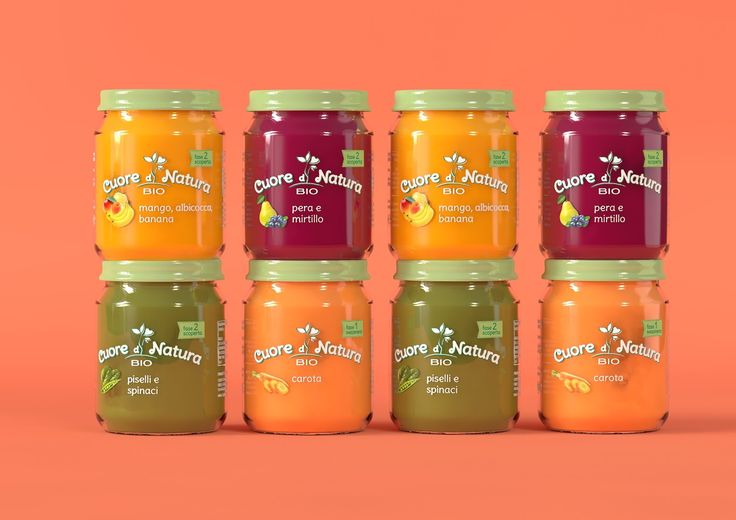 It's perfect for serving to baby or to use in recipes.
It's perfect for serving to baby or to use in recipes.
Get Recipe
Blueberry
Small but mighty! Blueberries are known as a superfood. Superfoods are usually plant-based and rich in nutrients that are beneficial to your health such as vitamins, minerals, healthy fats and fiber.
Blueberry Puree
5 from 2 votes
Blueberry puree is full of antioxidants and vitamins and makes for a quick and easy first food for baby! It can also be used as a topping or mix-in for breakfast, dessert and drink recipes.
Get Recipe
Strawberry
Strawberries pack quite a health punch! They are low calorie, taste delicious and are a great source of vitamins, minerals and plant compounds.
Strawberry Puree
5 from 2 votes
Strawberry puree is easy to make and naturally sweet with no added sugar! Use it in baked goods, drinks or as baby food.
Get Recipe
How to Store Purees
Freshly pureed baby food should be stored in the fridge and used within 3-4 days. For longer storage, I recommend freezing purees in an airtight container. I like using silicone ice cube tray or freezer safe jars because they make it easier to thaw smaller amounts for serving to babies.
For longer storage, I recommend freezing purees in an airtight container. I like using silicone ice cube tray or freezer safe jars because they make it easier to thaw smaller amounts for serving to babies.
How to Thaw Frozen Puree
I recommend thawing frozen purees in the fridge the night before you want to use them. In a pinch, you can also thaw it quickly with a warm water bath. It thaws quickly if you’re defrosting a small amount to serve to a baby.
FAQ
Can I store homemade baby food purees?
Yes! Making large batches of purees and storing them in the refrigerator or freezer makes feeding baby homemade purees a breeze.
Can you freeze homemade purees?
Freezing baby food that has been made with frozen fruit or vegetables is fine, as long as you have cooked the frozen foods first. Do not refreeze foods that have thawed without cooking. I recommend labeling baby food with the ingredient and date before you place them in the freezer.
Can you freeze baby food made with breast milk or formula?
If you are freezing baby food that has been mixed with fresh breast milk you’re fine! However, you should not freeze baby food that has been mixed with previously frozen breast milk. Once frozen breast milk has been thawed, it should never be re-frozen.
If you are using formula, it should be okay to freeze baby food that has been mixed with it. Most formula companies don’t recommend freezing formula, but you’re using such a small amount.
You can also freeze the baby food purees without adding any liquid. You can then thaw the baby food puree in the fridge overnight and then thin the food to the desired consistency with breast milk or formula right before serving.
This post about freezing baby food has a ton of great insight and tips.
Should I use organic fruits and vegetables?
I recommend using organic produce when possible, though I realize this isn’t always in the budget.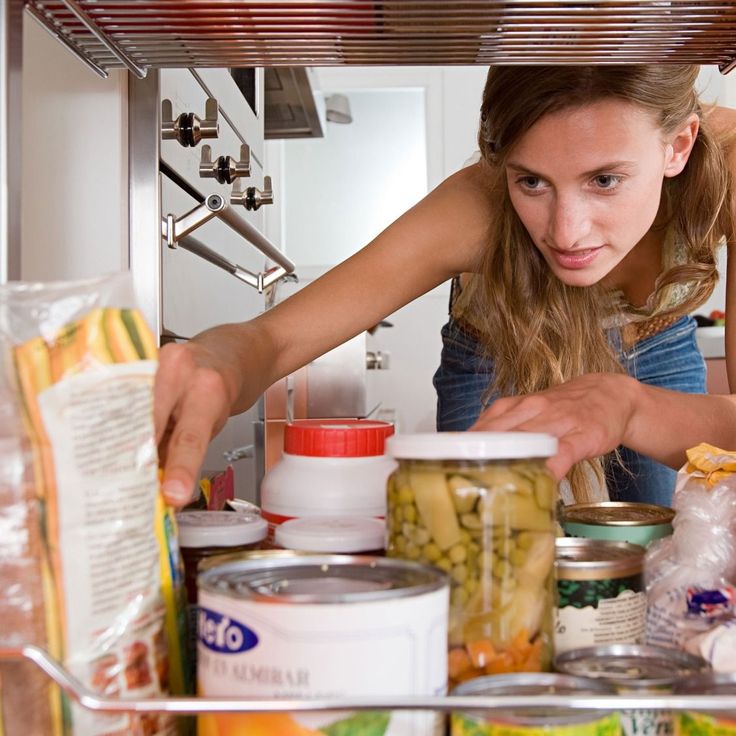 Either way thoroughly rinsing your fruits and vegetables is an important step whether they’re organic or not.
Either way thoroughly rinsing your fruits and vegetables is an important step whether they’re organic or not.
This list of the dirty dozen fruits and vegetables from the EWG is a good guide if you can only budget for some but not all organic produce.
Is it safe to thin baby food with cow’s milk?
From a nutritional point of view, most doctors recommend waiting to introduce babies to cow’s milk until one year of age. If you need to thin your puree you can use breast milk, formula or plain water.
What is the difference between stage 1 and stage 2 baby food?
Stage 1 purees are very thin with no chunkiness and are single ingredients. Stage 2 baby foods can be more elaborate with food combinations as well as chunkier textures.
More Recipes for Resources
- Baby Pancakes
- How to Make Oatmeal For Babies
- Baby (+ Toddler) French Toast
- Applesauce
- Baby Yogurt Melts
- 6 Baby Food Combinations (Stage 2)
Be sure to check out all of the baby food recipes here on EBF.
10 Stage One Baby Food Purees
5 from 5 votes
Everything you need to know about making stage 1 baby food, including 10 recipes for tasty purees that are perfect for introducing solids.
Print Recipe Pin Recipe
Prep Time 10 minutes
Cook Time 20 minutes
Total Time 30 minutes
Servings 6
Sweet Potato
- 2 cups steamed and peeled sweet potatoes
- water, breast milk or formula to thin
Carrot
- 1 lb steamed and peeled carrots
- water, breast milk or formula to thin
Avocado
- 1 avocado
- water, breast milk or formula to thin
Banana
- 1 banana
- water, breast milk or formula to thin
Pea
- 2 cups cooked peas
- water, breast milk or formula to thin
Butternut Squash
- 2 cups steamed and peeled butternut squash
- water, breast milk or formula to thin
Peach
- 3 ripe peaches
- water, breast milk or formula to thin
Mango
- 2 ripe mangoes
- water, breast milk or formula to thin
Blueberry
- 2 cups blueberries
- ½ cup water
Strawberry
- 2 cups strawberries
- water, breast milk or formula to thin
Add veggies or fruit into a high powered blender or a food processor.
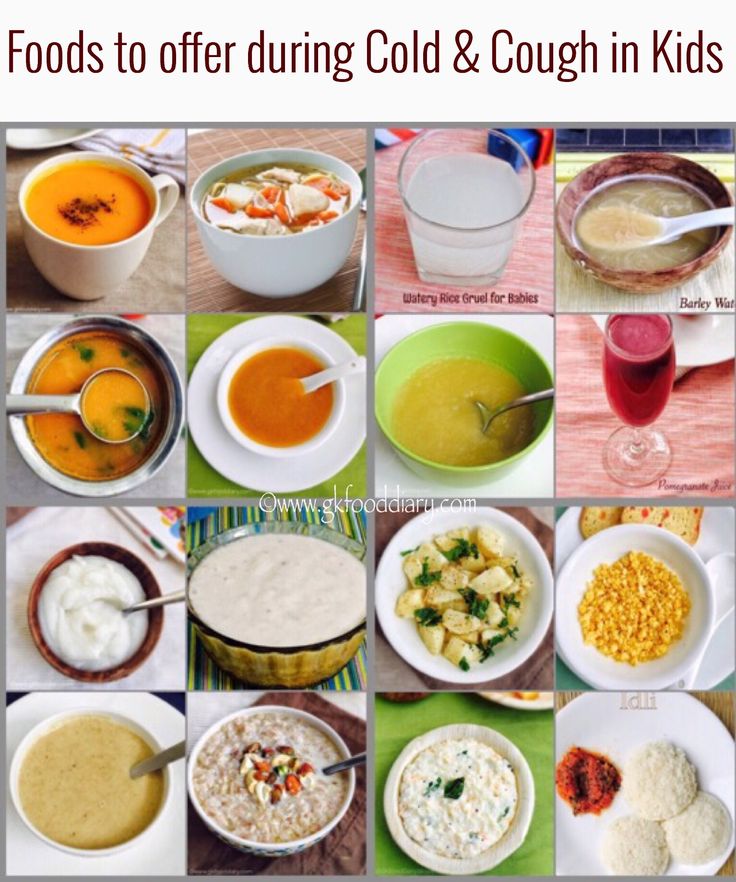 Blend and add liquid until you reach the consistency you desire. You can make the purees smooth and thin for young babies or thicker and chunkier for older babies.
Blend and add liquid until you reach the consistency you desire. You can make the purees smooth and thin for young babies or thicker and chunkier for older babies.
blender
food processor
Serving: 1sweet potato Calories: 75kcal Carbohydrates: 17g Protein: 1g Sodium: 48mg Potassium: 292mg Fiber: 3g Sugar: 4g
DID YOU MAKE THIS RECIPE?
Please leave a comment and star rating on this post and share on social media using the hashtag #eatingbirdfood. I love seeing your recipe shares!6 Baby Food Combinations (Stage 2)
6 easy and tasty baby food combination recipes: Sweet Potato Apple, Asparagus Apple, Blueberry Banana Quinoa Flax, Peach Pear, Avocado Peach Pineapple Kale and Pineapple Mango.
Earlier this week I shared a recipe for carrot baby food, which is a great first food for babies. Today I’m sharing 6 baby food combinations that work for babies who are a little older, around 6-8 months. The combos I’m sharing are mostly fruit and vegetables, but there is one combo with quinoa and flaxseed as well. All of these combos have been taste-tested and approved by Olivia. She gobbled up each of them!
The combos I’m sharing are mostly fruit and vegetables, but there is one combo with quinoa and flaxseed as well. All of these combos have been taste-tested and approved by Olivia. She gobbled up each of them!
Baby not ready for stage 2? I’ve got a collection of 10 baby food purees for stage 1 eaters!
The recipes I’m sharing here are just to give you some ideas of how to make different baby food combos, but there are so many other combos you can make – the options are endless and it’s fun to get creative!
Just last week I made a new combo inspired by carrot cake with steamed carrots, pineapple, ginger, nutmeg and cinnamon. I’ve also been making Olivia peanut butter banana oatmeal (with quick oats) and chia pudding made with breast milk. She loves both!
I haven’t introduced Olivia to meat, but we’ve given her eggs and I’m hoping to have her try meat soon. I’ll likely start with salmon since it’s packed with so many nutrients. Fingers crossed she likes it!
How to Make a Fruit or Veggie Puree
Alight, so let’s cover the basics first… how to make a basic baby food puree with fruit or veggies.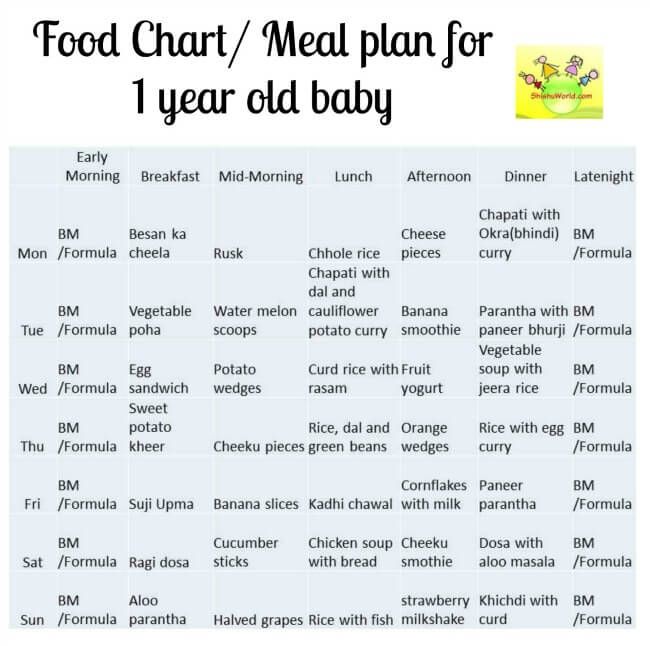 It’s actually really easy. That said, if you’re brand new to making baby food purees it might be helpful to review my homemade carrot puree or sweet potato puree recipe. Here’s the basic process:
It’s actually really easy. That said, if you’re brand new to making baby food purees it might be helpful to review my homemade carrot puree or sweet potato puree recipe. Here’s the basic process:
- Prep: wash the fruit/veggies with water. Peel and chop into smaller pieces. Some fruits and veggies don’t need to be peeled because once they’re cooked the peel will come right off.
- Cook: cook the fruit/veggies by steaming, boiling or roasting. You’ll know it’s done when the veggies are soft and tender. I like to use a fork to test this. If it goes in really easily, I know it’s done. Let cool and peel (if you waited to peel).
- Blend: place cooked fruit/veggies into a blender or food processor and blend until smooth (or the consistency you desire), adding liquid (water, breast milk or formula) as needed.
Do You Need to Steam Fruits and Veggies for Baby?
It’s recommended that most fruits and veggies are steamed (or cooked) before serving until baby reaches around 8 months of age.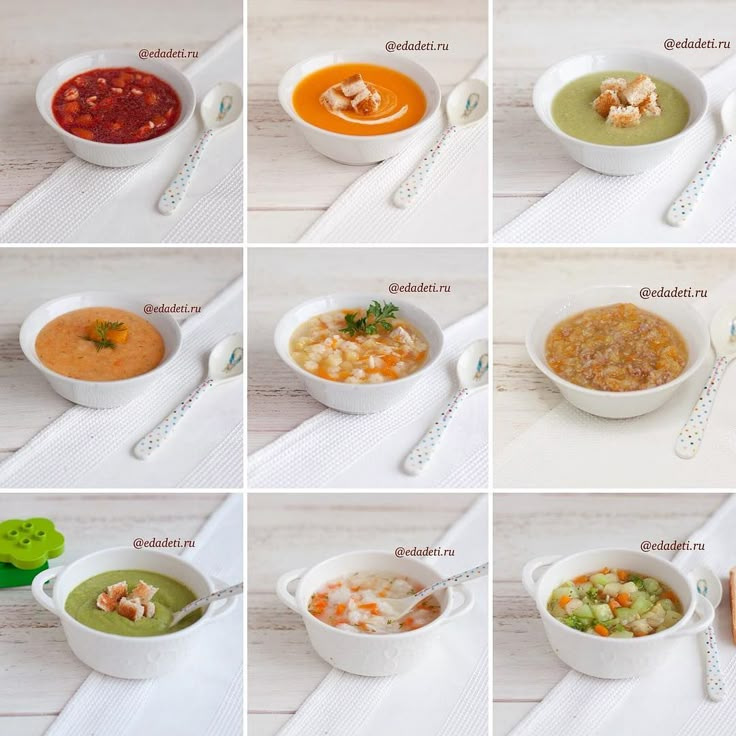 Some foods require cooking (like apples and sweet potatoes), just so they’re soft enough to puree. For softer foods (like a ripe peach or blueberries) steaming/cooking is optional, but helpful for babies 6-8 months of age because cooking makes the food easier to digest and baby will able to absorb more nutrients from the food. As you’ll see in my recipes below, I like to use a steamer basket to steam most of my fruit and veggies before pureeing.
Some foods require cooking (like apples and sweet potatoes), just so they’re soft enough to puree. For softer foods (like a ripe peach or blueberries) steaming/cooking is optional, but helpful for babies 6-8 months of age because cooking makes the food easier to digest and baby will able to absorb more nutrients from the food. As you’ll see in my recipes below, I like to use a steamer basket to steam most of my fruit and veggies before pureeing.
Bananas and Avocado
Bananas and avocado are the exception and they are great options to have on hand because you can easily just mash, thin with liquid (if needed) and serve.
How to Make Baby Food Combinations
For all of these combination recipes, I steamed each fruit/veggie separately and then made the combos using the measurements I share in the recipes. I did it this way because I was batching all of these combos at once and I’m only able to fit so much in one pot, but also because the steam time varies for most fruits and veggies (see below). Of course, you will find some recipes (on other sites) that involve cooking the items that are combined all together, but I found it easier just to steam all of my ingredients separately, measure and then blend them together. Do what feels easiest for you!
Of course, you will find some recipes (on other sites) that involve cooking the items that are combined all together, but I found it easier just to steam all of my ingredients separately, measure and then blend them together. Do what feels easiest for you!
How to Blend Baby Food
Once your fruit/veggies are cooked, it’s time to blend. For this you can use a blender, food processor or even an immersion blender. I’ve been using my Vitamix and LOVE it for making baby food because it’s really powerful and makes the blends so smooth and creamy. Some foods don’t need to be blended for babies who are okay with a more chunky texture. You can simply mash them well with a fork.
Peeling the Fruit and Veggies
I highly recommend peeling your fruits and veggies because peeling results in smoother purees and makes the food easier for baby to digest. Some foods, like carrots, should be peeled before cooking, but other foods like sweet potato, apples, peaches and pears tend to have skin that peels right off after steaming. Ultimately it’s up to you whether you want to peel the fruit/veggies before or after steaming. Test it both ways and decide which option is easier for you. I’m team peel after steaming!
Ultimately it’s up to you whether you want to peel the fruit/veggies before or after steaming. Test it both ways and decide which option is easier for you. I’m team peel after steaming!
- 1 avocado
- 1 bunch of kale
- 1 sweet potato
- 1 bunch asparagus
- 1 banana
- 2 apples
- 2 pears
- 4 peaches
- 1 pint blueberries
- 1 pineapple
- 1 mango
- quinoa
- ground flax
Steaming Time For the Fruits and Veggies
As I mentioned above, it’s recommended that most fruits and veggies (even soft ones) are steamed (or cooked) before serving babies who are 6-8 months. If your baby is older you can experiment with using fresh blueberries, peaches, pears, pineapple and mango that hasn’t been steamed, so long as the fruit is ripe and soft. I actually used fresh blueberries when making the blueberry banana quinoa flax combo.
- Sweet potato: 12-15 minutes
- Apple: 10-12 minutes
- Asparagus: 7-13 minutes
- Blueberries: 5-10 minutes
- Peach: 2-4 minutes
- Pear: 10-12 minutes
- Pineapple: 5-10 minutes
- Mango: 5-10 minutes
Frozen fruit and veggies also work for these recipes. You’ll likely just need to steam them a bit longer.
You’ll likely just need to steam them a bit longer.
6 Easy Baby Food Combinations
Here are six different baby food combinations. I’ve listed them in order of the level of complexity from the least complex (peach pear) to most complex (blueberry banana quinoa and flax).
Peach PearIngredients: 2 steamed and peeled pears and 3 steamed and peeled peaches + water or breast milk to thin (if needed)
Asparagus AppleIngredients: 1 bunch of steamed asparagus, 1 steamed and peeled apple + water or breast milk to thin
Sweet Potato Apple CinnamonIngredients: 1 steamed and peeled sweet potato, 1 steamed and peeled apple, pinch of cinnamon + water or breast milk to thin
Avocado Peach Pineapple KaleIngredients: 1 avocado, 1 steamed and peeled peach, 1/2 cup steamed pineapple and 1/2 cup of steamed kale + water or breast milk to thin (if needed)
Pineapple MangoIngredients: 1 cup steamed pineapple + 1 cup steamed mango + water or breast milk to thin (if needed)
Blueberry Banana Quinoa Flax
Ingredients: 1 pint steamed blueberries, 1/2 cup cooked quinoa, 1 ripe banana, 2 Tablespoons of ground flaxseed + water or breast milk to thin (if needed)
How to Store Homemade Baby Food
Once you have the baby food blended to the consistency you want, let the mixture cool and then transfer into BPA-free storage containers or into an ice cube tray. I’ve been using silicone ice cube trays and these 4 oz glass storage containers. The ice cube trays are great for younger babies who aren’t eating as much volume because you can defrost one cube at a time. While the 4 oz jars are great for older babies who are eating more than 1 oz at a time.
I’ve been using silicone ice cube trays and these 4 oz glass storage containers. The ice cube trays are great for younger babies who aren’t eating as much volume because you can defrost one cube at a time. While the 4 oz jars are great for older babies who are eating more than 1 oz at a time.
We had the ice cube trays on hand, and I just recently bought the WeeSprout glass storage containers that are specifically for baby food. I like that they have measurements on the side of the jars and that they’re glass instead of plastic (no worry about BPA). They are also freezer, dish-washer and microwave-safe. Plus they come with colorful lids that you can write on with a dry eraser marker to note the item and date.
When using the ice cube trays, I like to let the food freeze overnight (or until solid) and then transfer the cubes to a freezer bag so I can free up the ice cube tray for more food prep. I used plastic freezer bags for these photos but have since purchased reusable Stasher bags to use.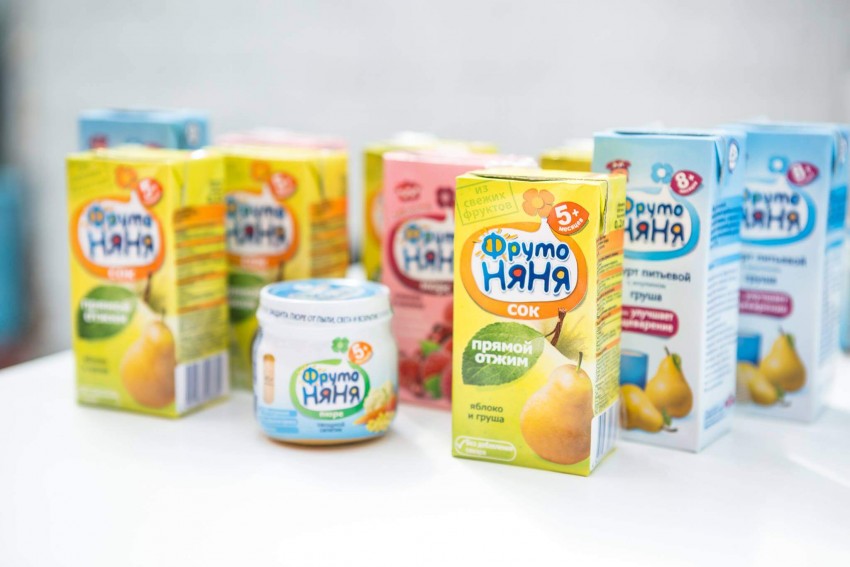 They’re freezer safe and non-toxic and a healthier option for the environment.
They’re freezer safe and non-toxic and a healthier option for the environment.
The baby food combos will keep in the fridge for 2-3 days and in the freezer for up to 3 months.
Can You Freeze Baby Food Made with Frozen Fruit or Veggies?
Yes, you can freeze baby food that has been made with frozen fruit or veggies as long as you have cooked the frozen foods first. You shouldn’t let frozen foods thaw (without cooking), puree and re-freeze.
Can You Freeze Baby Food Made with Breast Milk or Formula?
Freezing baby food that has been mixed with fresh breast milk is totally fine, however you should not freeze baby food that has been mixed with previously frozen breast milk. Frozen and thawed breast milk should never be re-frozen.
Most formula companies don’t recommend freezing formula, but from what I’ve read it’s okay to freeze homemade baby food that has been mixed with formula to thin.
Another option is to freeze the baby food purees without adding any liquid.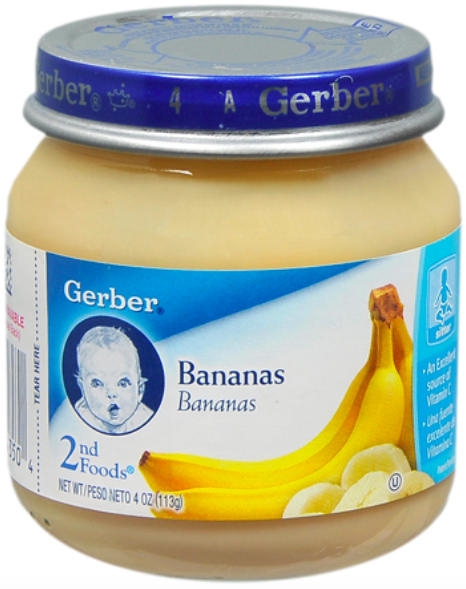 With this method you can thaw the baby food puree in the fridge overnight and then thin the food to the desired texture with breast milk or formula right before serving.
With this method you can thaw the baby food puree in the fridge overnight and then thin the food to the desired texture with breast milk or formula right before serving.
This post all about freezing baby food has a ton of great insight and tips.
Don’t Forget to Label
I highly recommend labeling any baby food you make before storing it! It’s amazing how quickly you forget what day you prepped the food once it goes into the fridge or freezer. #mombrain
How to Reheat or Thaw Frozen Baby Food
To thaw frozen baby food, I recommend taking the jar out of the freezer the night before you want to use it so it can defrost in the fridge overnight. If you need to use it right away, you can thaw it using a water bath. Some people will recommend microwaving the frozen puree using the defrost setting, but I prefer these two methods:
- Defrost in the refrigerator: Place frozen puree cubes into a jar or baby’s serving dish, cover, and place in the refrigerator overnight.
 If you stored the puree in a jar or storage container, simply place the jar the fridge.
If you stored the puree in a jar or storage container, simply place the jar the fridge. - Water bath: Place frozen pureed cubes in a small container and set in another larger container with warm water. Replace the water as needed. Once defrosted, portion the food into individual bowls, cover, and refrigerate until serving.
Be sure to use any of the defrosted food within 48 hours of being defrosted and do not re-freeze.
More Recipes for Babies and Toddlers
- 10 Baby Food Purees (Stage 1)
- Baby Pancakes
- How to Make Oatmeal For Babies
- Carrot Baby Food
- Peach Baby Food
- Baby (+ Toddler) French Toast
- Applesauce
- Baby Yogurt Melts
- Butternut Squash Puree
- Sweet Potato Puree
6 Baby Food Combinations
4 from 93 votes
6 easy and tasty baby food combo recipes: Sweet Potato Apple, Asparagus Apple, Blueberry Banana Quinoa Flax, Peach Pear, Avocado Peach Pineapple Kale and Pineapple Mango.
Print Recipe Pin Recipe
Prep Time 10 minutes
Cook Time 20 minutes
Total Time 30 minutes
Servings 6
Peach Pear
- 3 steamed and peeled peaches
- 2 steamed and peeled pears
- water, breast milk or formula to thin (I didn’t need extra liquid for this one)
Asparagus Apple
- 1 bunch of steamed asparagus
- 1 steamed and peeled apple
- water, breast milk or formula to thin
Sweet Potato Apple Cinnamon
- 1 steamed and peeled sweet potato
- 1 steamed and peeled apple
- pinch of cinnamon
- water, breast milk or formula to thin
Avocado Peach Pineapple Kale
- 1 avocado
- 1 steamed and peeled peach
- 1/2 cup steamed pineapple
- 1/2 cup of steamed kale
- water, breast milk or formula to thin (I didn’t need extra liquid for this one)
Pineapple Mango
- 1 cup steamed pineapple
- 1 cup steamed mango
- water, breast milk or formula to thin (I didn’t need extra liquid for this one)
Blueberry Banana Quinoa Flax
- 1 pint steamed blueberries
- 1/2 cup cooked quinoa
- 1 ripe banana
- 2 Tablespoons of ground flaxseed
- water, breast milk or formula to thin (I didn’t need extra liquid for this one)
Pick which combo you want to make, steam the fruits and veggies (using the steam times listed in my chart above).

Add all ingredients for the combo you’re making into a high powered blender or a food processor. Blend until you reach the consistency you desire. You can make the purees smooth and more liquidy for young babies or thicker and chunkier for older babies.
Serving: 1/6 of peach pear recipe Calories: 63kcal Carbohydrates: 16g Protein: 1g Sodium: 1mg Potassium: 211mg Fiber: 3g Sugar: 12g
DID YOU MAKE THIS RECIPE?
Please leave a comment and star rating on this post and share on social media using the hashtag #eatingbirdfood. I love seeing your recipe shares!From 4 to 6 months
Breast milk is the best food for your baby.
It is very important that the baby consumes breast milk for as long as possible.
The right age to start complementary foods
It is recommended to start introducing complementary foods into the baby's diet no earlier than 4 months, but no later than 6 months*. At this age, the baby is in the active phase of development and reacts with curiosity to everything new! Some babies at 4 to 5 months of age can no longer satisfy their appetite with breast milk alone and need complementary foods for healthy growth. Other children have enough breast milk, and they are ready for the introduction of complementary foods only after 6 months. The decision to start complementary foods should always be made according to your baby's development. Do you feel like your baby is not getting enough breast milk? Does your baby hold his head on his own, show interest in new foods or a spoon? Then it's time to start feeding. If in doubt, consult your pediatrician.
Other children have enough breast milk, and they are ready for the introduction of complementary foods only after 6 months. The decision to start complementary foods should always be made according to your baby's development. Do you feel like your baby is not getting enough breast milk? Does your baby hold his head on his own, show interest in new foods or a spoon? Then it's time to start feeding. If in doubt, consult your pediatrician.
If your baby spits out the first spoonfuls of puree, be patient. After all, he must first learn to swallow it. Start with a few scoops and give your child time to get used to the new form of feeding.
*Recommendation of the Nutrition Committee of the European Society of Pediatric Gastroenterology, Hepatology and Nutrition (ESPGHAN)
Why is complementary food important for the baby?
After 4-6 months of life, mother's milk or milk formula alone is not enough to supply the child's body with all the nutrients and necessary energy.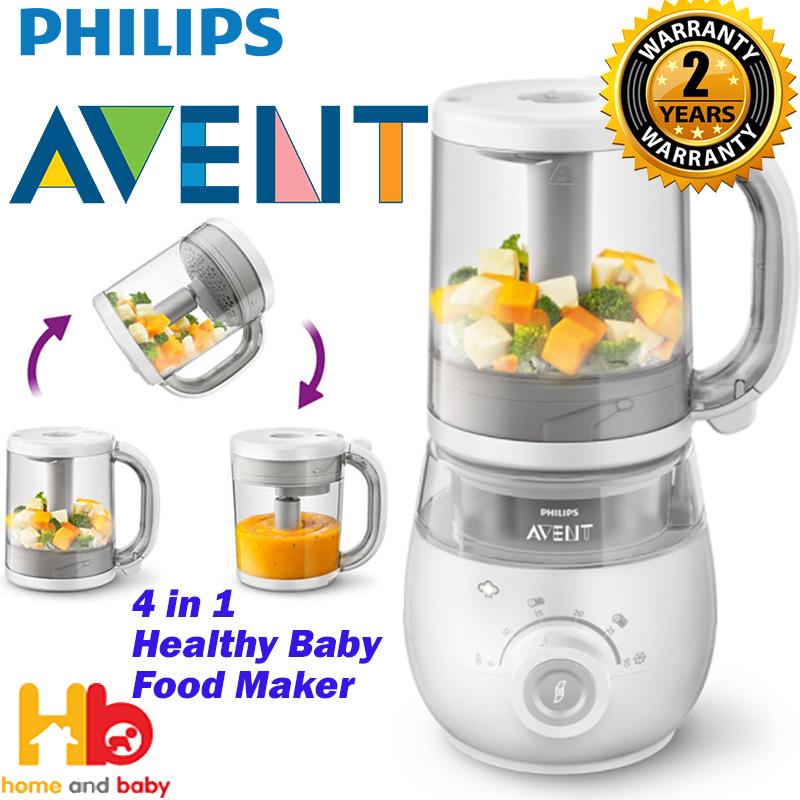 In addition, the transition to solid food trains the muscles of the mouth. And finally, with the introduction of complementary foods, the child will get acquainted with the variety of taste directions, which is also important for his development.
In addition, the transition to solid food trains the muscles of the mouth. And finally, with the introduction of complementary foods, the child will get acquainted with the variety of taste directions, which is also important for his development.
When to start complementary foods?
Gradually replace one breastfeed with complementary foods. First for lunch, then for dinner and finally for lunch. The mouse eats breakfast with the usual dairy food.
Starting complementary foods with HiPP products is easy. The first spoons will be vegetable or fruit purees HiPP:
First step: lunch
We recommend that you start complementary foods at lunchtime with HiPP vegetable puree (for example, "Zucchini. My first puree", "Cauliflower. My first puree" or "Broccoli .My first puree"). Then, for satiety, feed your baby as always: breast or bottle. The amount of vegetable puree can be increased daily by 1 spoon. Be patient if your baby does not immediately love vegetables. Try repeating the vegetable puree in the following days. Next week, you can expand your diet with other varieties of HiPP vegetables (for example, "Carrots. My first puree" or "Potatoes. My first puree").
Try repeating the vegetable puree in the following days. Next week, you can expand your diet with other varieties of HiPP vegetables (for example, "Carrots. My first puree" or "Potatoes. My first puree").
If your baby tolerates vegetables well, in the third week you can introduce grain porridge into the diet, and as a dessert, offer a few spoons of fruit puree enriched with vitamin C. Vitamin C helps to better absorb iron in the body.
Once your baby starts eating a whole serving of mashed potatoes for lunch, you can eliminate breast milk or formula during that meal.
Tip: Reheat as much puree as needed for feeding. Store leftover puree in a sealed jar in the refrigerator. Use the contents of the opened jar within a day.
Important! If you are using a microwave, please remove the lid before reheating puree. Stir after heating. To prevent damage to the jar, please use only a plastic spoon. Always check food temperature before feeding.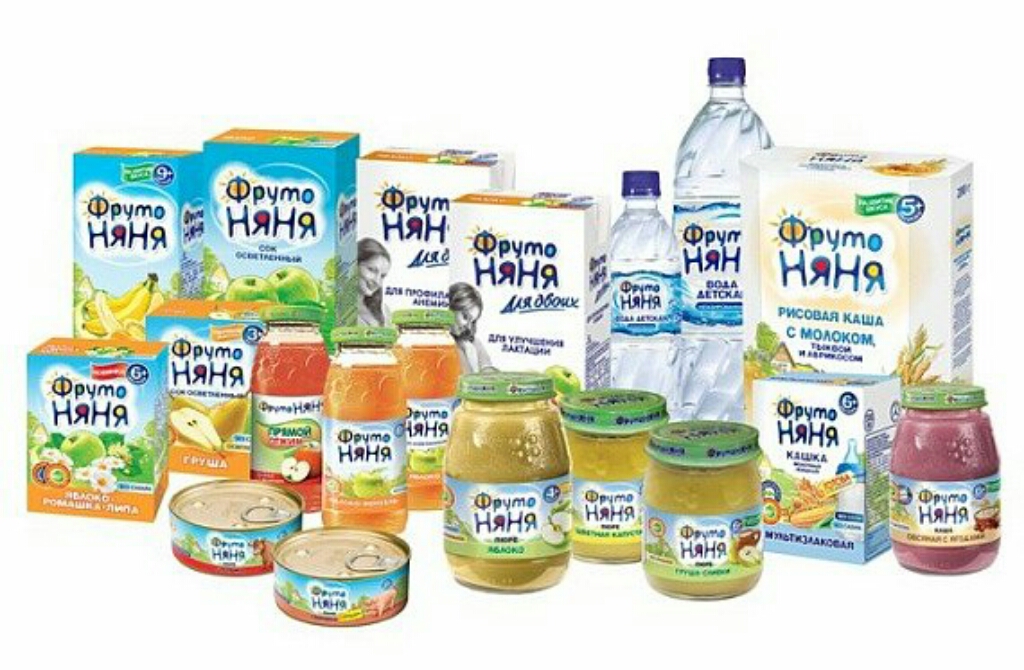
from 6 months
HiPP product groups can be recognized by the following color coding:
Learn more: Advice
Video: Weaning introduction - OB tips Video: Baby massage Diet
From birth to 4 months From 4 to 6 months From 6 months From 7 to 9 months From 10 months to 12 months
Food and drinkDigestion of the babyOn holiday with the babyAllergySleepCrying of the babyMotor skills and speech
Choice of complementary foods
No age restrictions from the first daysfrom 1 monthfrom 4 monthsfrom 5 monthsfrom 6 monthsfrom 7 monthsfrom 8 monthsfrom 9 monthsfrom 10 monthsfrom 12 months
Choose a product categoryVegetable purees - Vegetable puree from 4 months - Vegetable puree from 5 months - Vegetable puree from 6 months - Vegetable puree from 7 months - Vegetable puree from 8 months Fruit puree - from 4 months - from 5 months months - from 6 monthsMeat purees - Meat pureesMeat and vegetable menu - from 8 months - from 12 monthsFish and vegetable menu - from 9Soups - from 6 months - from 7 months - from 8 months - from 12 months - From 18 months "Good night" in jars - Cereal porridge with fruits in jarsDrinks - Health drinks - Granulated teas - Tea bags - JuicesCookies - Cookies
Baby food manufacturers bought into state support
00:0001 April 2002
316 views
00:0001 April 2002
Market baby food is entering a phase of "embarrassing growth".
 This is when the demand for a product grows slower than supply.
This is when the demand for a product grows slower than supply. The baby food market is entering a phase of "embarrassing growth". This is when the demand for goods grow at a slower rate than supply. Over the past 4 years, the Russian baby food industry has experienced an investment boom. Through a special program since 1997, the Russian Government has sent development of the production of baby cereals, purees, breast milk substitutes about $600 mln. The federal target program "Baby Food Industry of Russia" allowed The Government of the Russian Federation to issue guarantees for loans received from banks UK, Germany, France, Italy, Japan. Western companies - Heinz, Nestle, Kruger, Kolinska also opened in Russia similar factories. The American corporation Heinz not only built a plant in the Stavropol Territory, but also almost 100% uses Russian raw materials. Only complex ones are imported vitamin and mineral complexes. OJSC "Vologda baby food plant", owned by two companies - German Kruger and Russian CJSC "Trading House SLAVEX" (shares of the enterprise divided equally), -- produces porridge "Winnie" and prepares a new production with a capacity of 1800 tons of instant cocoa per year.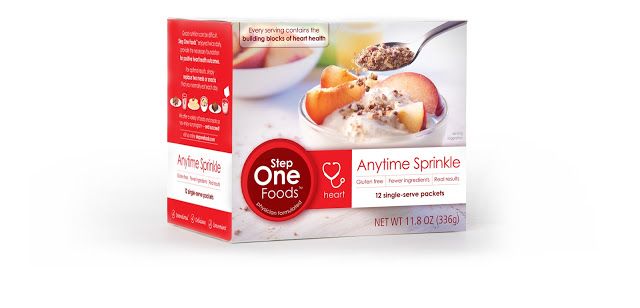 The Slovenian company Kolinska announced its production in Russia in 2001. It will be a $5 million baby cereal factory in the Moscow Region.
The Slovenian company Kolinska announced its production in Russia in 2001. It will be a $5 million baby cereal factory in the Moscow Region.
Childcare Most of the investment decisions were made in the context of a shortage of children nutrition. Russian investors represented by the state expected not only to feed those who have already been born, but also those who will be born in the future. Moreover, the growth newborns were expected to be 15-20% per year. However, they miscalculated: the birth rate in the country was falling. Only in 2001 did it emerge a small increase in newborns per 1,000 inhabitants. And while this trend remains, in 83 constituent entities of Russia in January 2002 the number of births increased. By the beginning of 2002, most participants in the federal program received new lines and are ready to start production at full capacity. But they have one question: will the market survive?
Market layout The turnover of the baby food market in Russia is approximately 42. 5 thousand tons five main types of goods (breast milk substitutes, cereals, purees, juices and tea). In monetary terms, this amounts to $165 million in wholesale prices. For example, capacity of equipment (10 thousand tons per year) for the production of instant cereals cooking at the Federal State Unitary Enterprise "Combine of baby food and food concentrates" is enough not only to St. Petersburg, but throughout the country, without taking into account competitors. One of the participants in the program "industrialization of baby food" - OJSC "St. Petersburg Dairy Plant 1 "Petmol". Management solves the issue sales of finished products for almost 4 years - since the launch of the baby food shop, and so far to no avail. The workshop can produce 10 tons of baby cottage cheese and 30 tons of liquid dairy products per day. mixtures. But for curds, the equipment is loaded by 80%, and the production of liquid milk formula is at the "freezing point". Simultaneously with the installation of baby food equipment at Petmol in Petersburg began to build a system of milk distribution points specifically for distribution of factory products.
5 thousand tons five main types of goods (breast milk substitutes, cereals, purees, juices and tea). In monetary terms, this amounts to $165 million in wholesale prices. For example, capacity of equipment (10 thousand tons per year) for the production of instant cereals cooking at the Federal State Unitary Enterprise "Combine of baby food and food concentrates" is enough not only to St. Petersburg, but throughout the country, without taking into account competitors. One of the participants in the program "industrialization of baby food" - OJSC "St. Petersburg Dairy Plant 1 "Petmol". Management solves the issue sales of finished products for almost 4 years - since the launch of the baby food shop, and so far to no avail. The workshop can produce 10 tons of baby cottage cheese and 30 tons of liquid dairy products per day. mixtures. But for curds, the equipment is loaded by 80%, and the production of liquid milk formula is at the "freezing point". Simultaneously with the installation of baby food equipment at Petmol in Petersburg began to build a system of milk distribution points specifically for distribution of factory products. However, the sales network was completed only in 2001, bringing the total number of milk distribution points on the basis of institutions health care of St. Petersburg up to 42.
However, the sales network was completed only in 2001, bringing the total number of milk distribution points on the basis of institutions health care of St. Petersburg up to 42.
What can I say In 2002, the administration of St. Petersburg is going, following the example of Moscow, to introduce a centralized system of city orders for the purchase of baby food from local manufacturer. In the capital city order for the supply of baby food to dairy kitchens given to the company "Wimm-Bill-Dann". Her Lianozovsky dairy plant per year produces more than 50 thousand tons of fermented milk products (kefir, milk, cottage cheese, yogurt, cream, milk mixtures). Until the beginning of this year, the district offices of the Committee for health administration of St. Petersburg. Lack of a unified urban system purchases were reflected in prices. According to the Health Administration Committee Petersburg, in 2001 the average annual prices for dairy products for children of the first 2 years of life in milk distribution points differed by several once.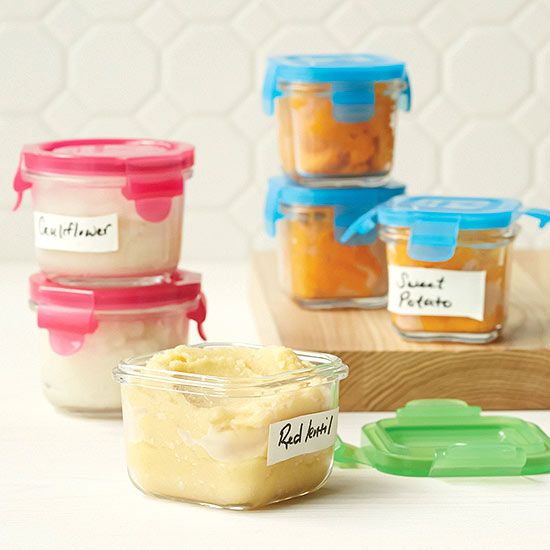 For example, 1 kg of dry milk porridges in milk distribution points Kalininsky district cost 124 rubles, and in the Kirovsky district - 62 rubles. This explains the idea that was in the air throughout 2001 about limiting trade allowance for baby food in St. Petersburg. Analyzing the experience of others regions, the city administration refused it. And, in order to avoid possible speculation with baby food, is not yet organized centralized procurement, the city administration decided to stop issuing money subordinate committees for procurement. Instead decided from early 2002 to compensate the expenses of citizens on baby food for children of 1-2 years of age at the expense of the budget. Compensation money will not be managed Committee on Health, and the Committee on Labor and Social Protection of the Population.
For example, 1 kg of dry milk porridges in milk distribution points Kalininsky district cost 124 rubles, and in the Kirovsky district - 62 rubles. This explains the idea that was in the air throughout 2001 about limiting trade allowance for baby food in St. Petersburg. Analyzing the experience of others regions, the city administration refused it. And, in order to avoid possible speculation with baby food, is not yet organized centralized procurement, the city administration decided to stop issuing money subordinate committees for procurement. Instead decided from early 2002 to compensate the expenses of citizens on baby food for children of 1-2 years of age at the expense of the budget. Compensation money will not be managed Committee on Health, and the Committee on Labor and Social Protection of the Population.
Everything is going well Participants in the Russian baby food market are confident that the situation will stabilize and the number of brands, as well as players, will be reduced to European level.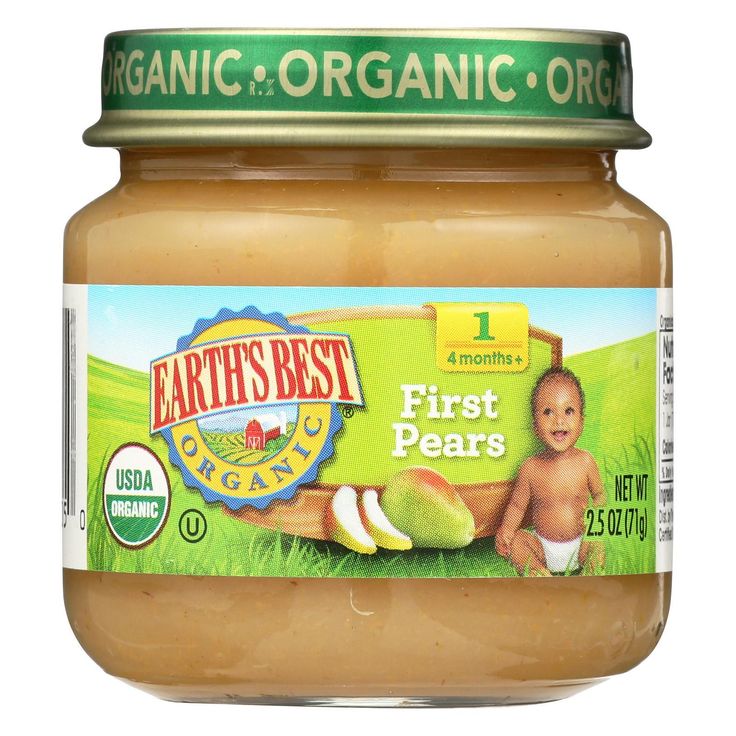 In developed countries, for each type of product, no more than two to four stamps. For example, in Germany there are three main brands of baby food - Hipp, Milupa, Gerber. In Sweden - Nestle, Semper. United Arab Emirates -- Gerber, Hipp, etc. In Russia, all the listed brands are represented, plus brands domestic manufacturers. As a result, for each type of baby food circulation up to 20 stamps. The main reasons for the wide range of products remaining in Russia baby food -- low customs duties, no government regulation of imports, gaps in domestic production. Due to its rapid development, the most popular method in the last year or two competition in the market - dumping. The main reason for dumping is the obligations of distributors to the manufacturer sell a certain amount of products in order to get more in the future product discount. Among imported baby food, dumping is especially common in products Nestle. Distributors of the company, as a rule, purchase the entire range products, but baby food is not among the profitable ones.
In developed countries, for each type of product, no more than two to four stamps. For example, in Germany there are three main brands of baby food - Hipp, Milupa, Gerber. In Sweden - Nestle, Semper. United Arab Emirates -- Gerber, Hipp, etc. In Russia, all the listed brands are represented, plus brands domestic manufacturers. As a result, for each type of baby food circulation up to 20 stamps. The main reasons for the wide range of products remaining in Russia baby food -- low customs duties, no government regulation of imports, gaps in domestic production. Due to its rapid development, the most popular method in the last year or two competition in the market - dumping. The main reason for dumping is the obligations of distributors to the manufacturer sell a certain amount of products in order to get more in the future product discount. Among imported baby food, dumping is especially common in products Nestle. Distributors of the company, as a rule, purchase the entire range products, but baby food is not among the profitable ones.

